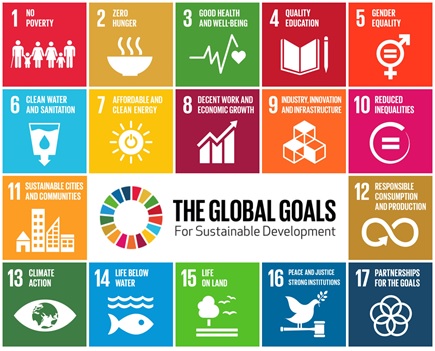What are the Sustainable Development Goals?

What do Beyoncé, Leonardo DiCaprio, Stephen Hawking and Ed Sheeran have in common? They are all supporting the Sustainable Development Goals. Glenn Everett explains how these goals were developed and ONS plans for monitoring UK’s contribution to these 2030 goals.
Our first report about the Sustainable Development Goals in the United Kingdom is published today. It sets out the picture of what we have achieved so far and what we are planning to do next. However, the significance of this first report has made me think of how we got here.
Back in 2012, the United Nations Secretary-General, Ban Ki-moon started planning for what could replace the Millennium Development Goals. The UK was involved in forming the new Goals from the start. The then Prime Minister, David Cameron, co-chaired a high-level panel that presented the first iteration of the goals. These were then discussed further in the UN General Assembly (UNGA) to eventually be agreed in September 2015 as the 17 goals and 169 targets we have today.
The UNGA provided a mandate to the UN Statistical Commission to undertake a technical exercise to provide global indicators for the 169 targets. An Inter-Agency Expert Group was formed with representatives from all UN Regions, at which I represented the UK, to propose the 232 indicators referred to in today’s report.
In the UK, ONS has the responsibility for sourcing and reporting the global level data. The challenge for all countries is finding relevant data for the indicators that often have no agreed methodology or standards (although these constitute a development programme). The further challenge will be disaggregating that data to show the picture by age, sex, geography, disability, migratory status, income and ethnicity so that we meet the SDG principle of ‘leave no one behind’.
Economy, environment and society
Increasingly, I see how reporting on the SDGs fits with our ‘Better Statistics, Better Decisions’ strategy. Sourcing and analysing data covering the economy, environment and society which is then disaggregated to show the full picture will enable better evidenced policy decisions. The data required to report on all indicators will push us to be more innovative and creative and I expect that this data revolution may include more use of administrative data, ‘big data’, satellite imagery and web scraped data to name a few.
It can be too easy to dismiss the Goals as some kind of unattainable wish list. I see them differently: they are a structure to help us monitor progress and to identify areas that may need development. The targets and indicators give us a way to measure whether we are actually on track to transform our world. They are not aimed just at the less developed countries but are universal in nature so that all countries must play a part in meeting the global goals.
So, how are we doing, so far? You can see all the data we have on our online reporting platform. To date, we have 96 indicators, around 41% of the total. None of them are fully disaggregated – yet. I recognise that we have much work to do and our first report outlines where we are going next on our SDG journey. We welcome your support and comments and you can contact our team on sustainabledevelopment@ons.gov.uk
You can also read more about the United Nations Sustainable Development Goals on their website. Also, the Global Goals project has a wide online presence.
Glenn Everett is Deputy Director for Well-being, Inequalities, Sustainability & Environment at ONS
